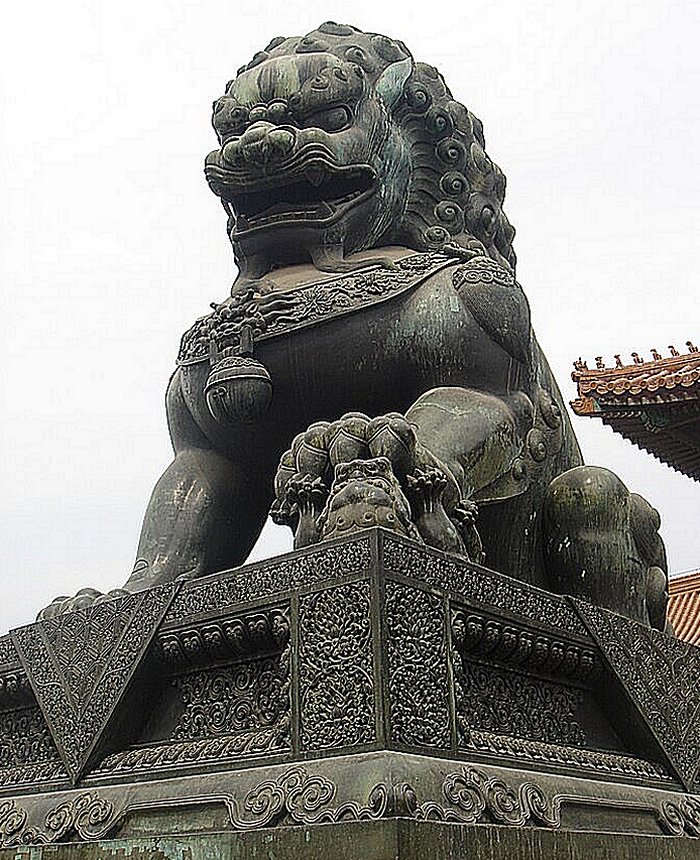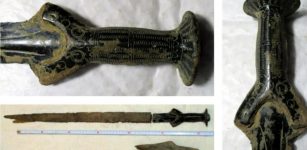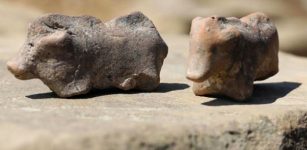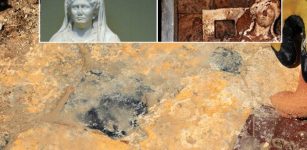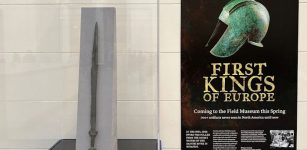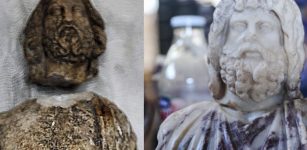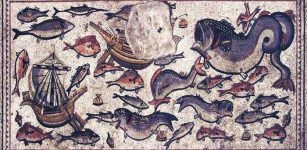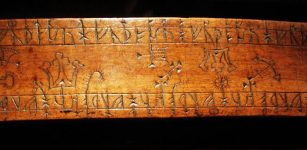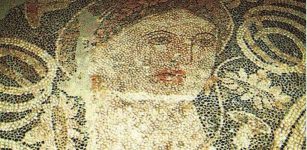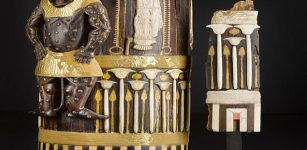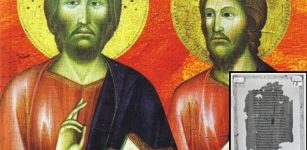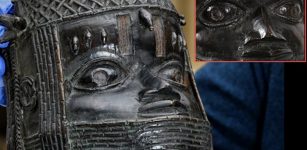Emperor Yongle’s Sword With A Lion’s Face That Guarded The Wielder
A. Sutherland - AncientPages.com -The Yongle Sword, a stunning piece of weaponry complete with its scabbard, was once in the possession of Emperor Yongle.
The sword is a well-known artifact from ancient times and serves as a testament to China's rich history. Decorated with a lion face, the artifact is in the collection of the Royal Armouries, United Kingdom. Itt is believed that the sword, was a diplomatic gift to a Tibetan Buddhist temple.
It has fittings adorned with a combination of Chinese and Tibetan-style design motifs. They are fashioned from high-quality brass according to traditional motifs used in the Ming Dynasty.
A lion's face decorating the Yongle sword has one goal - to guard the wielder.
This finely crafted piece of art has always been highly valued for its historical and cultural importance in China. It's a sophisticated representation of ancient Chinese swordsmanship.
A guardian lion (copper) in the Forbidden City, Beijing. Location: Hall of Supreme Harmony. Image credit: Tang Zu-Ming - Public Domain
Both the sword (Jian) and scabbard were probably made in the court workshops of the Yongle Ming Emperor in the early 15th century (about 1420), Chinese Ming Dynasty. To make the blade. the craftsmen used Damascus carbon steel that has been folded several times to finally produce an array of beautiful grain patterns.
The scabbard and handle of the weapon are created from rosewood covered in green stained leather and bound with gilt iron.
Several materials were used to make this sword, including metal-ferrous, metal-gold, metal-silver, semi-precious stone, silk, wood, and leather. The length of the blade is 30 inches (c. 760mm), and overall length of the sword is 35 inches (903 mm), while its weight is 2 kg.
Emperor Yongle’s sword is in the collection of the Royal Armouries, United Kingdom.
Emperor Yongle ((his real name - Zhu Di) was a great ruler. He was the fourth son of Hongwu, the founder of the Ming Dynasty, and the third ruler of China's Ming Dynasty, reigning from July 17, 1402, until his death in 1424.
One of Emperor Yongle’s most significant accomplishments was the relocation of the imperial capital from Nanjing to Beijing.
Emperor Yongle. Image source: shuge.org/
During this period the Ming Imperial family was building Beijing's Forbidden City, a magnificent palace complex that would serve as the political and administrative heart of the Chinese empire for many centuries to come. This gigantic undertaking was completed in 1421, and became Yongle’s sphere of operation and control from where during his reign he undertook five victorious expeditions against the Mongol nomads.
These historical events significantly contributed to ensured China's security.
His legacy is firmly etched in history, thanks to his impressive achievements that shaped the empire's culture, politics, and global impact. His rule is still frequently recalled as a time of dynamic transformation in the country. Yongle’s initiatives were bold, and his cultural interactions and progress highlighted China's strength and ingenuity.
Yongle ‘s unfinished builting project is related to the Yangshan Quarry, famous for a huge unfinished stele that was abandoned there during the reign of the Yongle Emperor. In 1405, Yongle ordered the cutting of a giant stele in this quarry for use in the Ming Xiaoling Mausoleum of his deceased father.
Three separate pieces were being cut: the rectangular stele base (pedestal), the stele body, and the stele head (crown, to be decorated with a dragon design). After most of the stone-cutting work had been done, the architects realized that moving stones from the quarry to Ming Xiaoling and installing them there in a proper way, would not be physically possible.
As a result, the project was abandoned and the three unfinished stele components still remain in Yangshan Quarry to this day.
Written by – A. Sutherland - AncientPages.com Senior Staff Writer
Updated on March 22, 2024
Copyright © AncientPages.com All rights reserved. This material may not be published, broadcast, rewritten or redistributed in whole or part without thexpress written permission of AncientPages.com
Expand for references


